WSJ:n artikkeli drone-operaattoreista:
Suora linkki:
https://www.wsj.com/articles/ukrain...-new-kind-of-war-11659870805?mod=hp_lead_pos8
Ukraine’s Drone Spotters on Front Lines Wage New Kind of War
A reconnaissance unit using drones to direct artillery strikes is frequently a target itself. Commercially available drones selling for as little as $3,000 are revolutionizing combat.
PRYBUZKE, Ukraine—“Fire,” a Ukrainian reconnaissance unit commander said after receiving a message from the artillery team on his mobile phone’s messaging app.
It took more than 20 seconds for the sound of an outgoing Ukrainian artillery round to reach this narrow strip of woodland on the front line between Ukrainian-held Mykolaiv and Russian-occupied Kherson in
southern Ukraine.
As the shell whistled overhead, another member of the team who goes by the call sign Zhora zoomed in on his terminal’s screen to see where it landed. A third member, Thor, leaned over to mark the location on a tablet with Kropyva, a mapping and artillery software developed for the Ukrainian military.
A plume of dark smoke could be seen on the drone’s feed before the sound of the explosion traveled back. “Oh, that was real close!” said the 34-year-old Zhora with a smile, noting the short distance between the impact spot and a fortified Russian position sheltering a BMD armored fighting vehicle.
That is how much of the fighting goes on
these days in Ukraine, where the front lines—with the exception of some parts of the Donbas area in the east—haven’t moved much in months. The two armies try to weaken each other in daily artillery exchanges that are guided by hundreds of spotters flying drones over enemy lines.
Abdulla, the commander of this special drone reconnaissance platoon, known as Terra, relayed the coordinates for the next round of artillery. Like most other Ukrainian soldiers, members of the platoon are allowed to be identified only by their call signs.
Just minutes earlier, Abdulla and his men were themselves scampering to seek cover in two dugouts after Russian forces spotted their drone in the air and fired several rounds in their general direction. The rounds landed too far away to cause damage. Not far from the spot, the remains of a burned-out car marked Russia’s success in eliminating another Ukrainian drone team a few weeks earlier.
“It’s a different kind of war now,” said Abdulla, a motorbike-race driver who obtained his law degree just before the war. “As people here say, if it comes down to exchanging gunfire, you’ve already made a mistake.” He volunteered during the 2014-15 war against Russian proxies in the Donbas area.
“When I was in my first campaign, I thought, what on earth are those drones, I have to be the real man, carry a gun on my shoulder, go seek out the enemy,” said the 33-year-old. “I’m older and wiser now.”
While drones have been around for decades, employed by the U.S. in Afghanistan and Iraq, and by Azerbaijan to devastating effect
against Armenian forces in 2020, the high saturation of the front lines by unmanned aircraft is a unique feature of the
Ukrainian war.
Both Russia and Ukraine operate professional military drones. Russia’s large fleet of Orlan-10 winged observation drones poses a serious problem for Ukrainian forces, which often don’t have the means to shoot them down. Ukraine employs its own fixed-wing observation drones, Leleka and Furia, as well as the Turkish-made Bayraktar TB2 armed drones that played an important role in destroying Russian armored columns in the early days of the war. Kyiv has also deployed so-called kamikaze drones such as the U.S.-made Switchblade and the Polish-supplied Warmate.
Much more widespread on the front lines are off-the-shelf commercial drones, such as Chinese-made DJI quadrocopters, operated by teams attached to individual battalions and companies of troops. With a retail price of around $3,000 for a DJI Mavic 3 and upward of $10,000 for the bigger DJI Matrice series, these drones can make all the difference on the battlefield, according to soldiers.
“They get bought by friends, by relatives, by volunteers—and then become the eyes of the front line units,” said Alex, a Ukrainian drone operator who fought in the
battle for Lysychansk in the Donbas area in June. “The situation can change in 10 minutes, and you need to see what the enemy is doing right away.” The powerful Russian jamming and electronic-warfare capabilities in the Donbas area, he added, disabled the GPS navigation systems used by most other drones—but didn’t disrupt the flights of quadrocopters such as DJI Mavic 3 that can be flown manually.
In confronting a much larger and better-equipped enemy, Ukraine’s military has had to become more flexible and inventive, accommodating teams of volunteers such as the Terra drone platoon into its structure. Most members of the platoon, which works with an infantry brigade on the Mykolaiv front, used to be Kyiv professionals who knew each other because of their joint interest in re-enacting medieval knight tournaments. Their preferred activity was cosplaying 15th century Flemish knights. The platoon, named after the home planet in the Warhammer 40,000 videogame, started up as part of Kyiv’s Territorial Defense when Russia invaded on Feb. 24.
On a recent day, Abdulla—who took his call sign from a character in a cult 1970 Soviet action movie—and three other soldiers, with guns, two drones in their carrying cases and backpacks full of spare batteries, got into a spray-painted pickup truck. The platoon’s drones and vehicles had been purchased with money contributed or collected by the team members themselves.
The pickup sped south of Mykolaiv, navigating around shell craters on rutted roads and passing the burned-out remains of the villages that changed hands in the first months of the war. At a strip of forest that serves as one of the unit’s launching grounds, Abdulla, Zhora and Thor jumped out and ran under the trees as the pickup sped back to avoid being spotted by Russian drones operating in the area. Thor, a 33-year-old project manager with an engineering degree, wore a patch saying “Avada Kedavra Bitch,” a reference to the deadliest curse in the Harry Potter series, next to a tourniquet on his body armor.
Upon arrival, Abdulla opened up a transmitter and created an internet connection. “It’s time for some nonverbal communication with the Russians,” he said. Zhora, who packaged nonperforming loans for a Kyiv bank before the war, began the mission with the DJI Mavic 3 drone, piloting it against the wind and into Russian lines. The drone, the size of a book, is relatively quiet and, with adaptations, can fly as far as 4 miles.
Zhora studied the landscape of Russian trenches and fortified positions, looking for priority targets, such as artillery pieces, tanks or ammunition stocks in the open. “Would be a prize to hit that one, but it is driving way too fast,” he said as a Russian Grad multiple-rocket launcher traveled on a road in the distance. A minute later, Zhora spotted another Russian vehicle, likely an armored ambulance, careening away from a Russian position. “Maybe one of them died?” he wondered. “Or maybe someone just had too much vodka,” Abdulla replied.
There weren’t any easy pickings, and Abdulla decided to focus on the Russian fortifications where armored vehicles were parked under thick concrete panels. Only a lucky direct hit can be effective against such defenses.
The strategy, however, was more complex. Firing on these fortifications could force the Russians to react by revealing additional positions and provoking troop movements. Russian response artillery fire could be used to pinpoint and target Russian guns. And barrages in the direct vicinity of Russian positions would degrade Russian troops even if they didn’t cause physical casualties.
“It’s a cat-and-mouse game here,” said Abdulla. “They must be under stress every day. It’s very important. If one day we have to launch an offensive, or they get the order to attack, they will be demoralized and fatigued.” The Russians are constantly shelling Ukrainian positions for the same reason.
Just as the small drone was returning from the first flight, a thud of an outgoing Russian artillery round, followed by a whistle, broke the chirping of birds. Everyone dove to the ground and scrambled for cover. The shell missed by a relatively comfortable distance, as did several others that followed. “They don’t know where we are,” Abdulla said, exhaling. “We keep working.”
Tapping on his phone from the dugout, he arranged for a Ukrainian artillery team in the rear to prepare for a fire mission some 30 minutes later. He didn’t know which caliber of gun and from where. It is considered bad form to inquire about details that, if intercepted, could be used by the Russians to destroy the Ukrainian artillery.
To guide fire, Zhora launched a bigger, DJI Matrice drone that can stay in the air longer and, because of superior optics, doesn’t have to fly so close to the enemy lines. With every round, the spotters tried to bring the shells closer to the Russian positions. On this day, none apparently sustained a decisive hit.
On the previous day, one of the shells hit a patch of forest that was teeming with Russian soldiers shortly before impact.
On the following day, Abdulla said, Ukrainian artillery fire that his team directed hit a Russian infantry fighting vehicle concealed under a wooden roof, and then struck again when Russian soldiers emerged from dugouts to try extinguishing the fire. Terra’s documented hits, which the platoon posts on its YouTube and Instagram accounts, include several Russian tanks, self-propelled and towed artillery pieces and other military vehicles.
“What is demoralizing somewhat is that they have lots more stuff,” Zhora said. “You blow something up, and then you see them replace it already the next day.”
As Russian guns returned fire, prompting it to relocate, the day’s mission ended. All in all, the amount of artillery fire from both sides was apparently similar—a dramatic change from the recent past, when Russia significantly outgunned Ukrainian troops in this area. Ukrainian HIMARS missile strikes have targeted Russia bridges and logistics hubs across the Kherson region in recent weeks.
“Maybe they are running low on ammunition now,” Abdulla said. “Maybe they are saving it up for the offensive. Or maybe their commander went to headquarters for a meeting and they don’t fire without him.”
Packing up their drones, the team waited as the pickup truck roared up in reverse, and then jumped in and left the front line for the day. “We will be back to fish tomorrow,” Abdulla said. “We are the biggest predator in this body of water.”
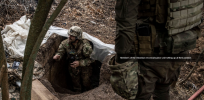








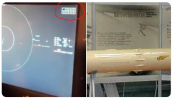
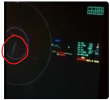
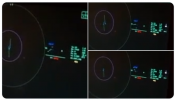
 ) .
) .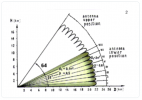
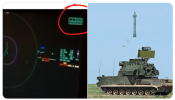
 I hope, however, that I did not make too many mistakes, and yet the meaning remains.
I hope, however, that I did not make too many mistakes, and yet the meaning remains. 


cepa.org





 www.verkkouutiset.fi
www.verkkouutiset.fi

www.verkkouutiset.fi
